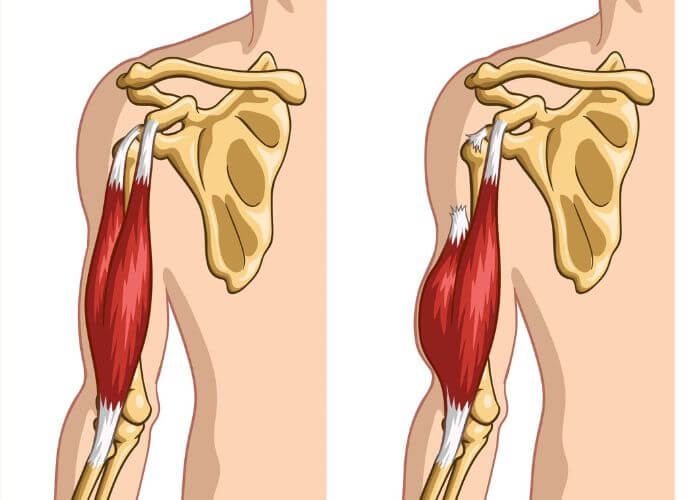Imagine waking up one day with a sharp pain in your shoulder or knee, realizing that an injury has taken away the activities you love. This scenario is all too common for many. Tendon tears can significantly disrupt daily life and hinder movement. Fortunately, advances in orthopedic care offer solutions like tenodesis.
Tenodesis is a surgical procedure designed to restore function after tendon injuries. It aims to reattach a torn tendon back to its original position or relocate it for improved stability and mobility. For those facing the challenges of tendon injuries, understanding tenodesis can illuminate the path from injury to recovery.
Join us as we explore this transformative process—from recognizing what a tendon tear entails to examining how tenodesis can facilitate healing and rehabilitation, transforming lives along the way. Whether you’re dealing with an injury yourself or simply curious about modern orthopedic treatments, this journey through tenodesis will shed light on its pivotal role in recovery and rehabilitation.
Understanding the Injury: What is a Tendon Tear?
Tendon tears are more common than many realize. They occur when the fibrous tissues connecting muscles to bones become damaged or ruptured. This injury can happen due to acute trauma, such as a fall or accident, or through repetitive strain over time.
Athletes often experience tendon tears in high-impact sports. However, they can also affect anyone engaged in everyday activities that put stress on joints and tendons.
Symptoms include sharp pain, swelling, and limited mobility in the affected area. Depending on the severity of the tear—partial or complete—the impact on function may vary significantly.
Understanding how these injuries occur is crucial for effective treatment planning. Recognizing risk factors like age and activity level can help individuals take preventive measures against tendon tears before they happen.
The Recovery Process: How Tenodesis Helps in Healing and Rehabilitation
The recovery process following a tenodesis procedure is crucial for restoring function and strength. Initially, patients may experience swelling and discomfort. This phase requires careful management to promote healing.
As the weeks progress, physical therapy becomes integral. A skilled therapist guides patients through tailored exercises designed to increase range of motion without straining the newly repaired tendon. Gradual reintroduction of movement helps build confidence.
Patients often find that tenodesis enhances stability in previously injured joints. This newfound support can significantly improve daily activities, from lifting objects to engaging in sports.
Restoring muscle strength takes time but is rewarding. Engaging in targeted resistance training further aids rehabilitation and encourages optimal outcomes.
Throughout this journey, maintaining open communication with healthcare providers allows for adjustments based on individual progress. Staying proactive fosters a sense of empowerment during recovery.
Benefits of Tenodesis Compared to Other Treatment Options
Tenodesis offers several advantages over traditional treatment methods for tendon injuries. Unlike conservative approaches, such as rest or physical therapy alone, tenodesis provides a more definitive solution for significant tendon tears.
One key benefit is the restoration of function. This surgical procedure reattaches the tendon to bone, promoting better mobility and strength in the affected area. Patients often experience quicker improvements in their range of motion compared to those relying solely on non-surgical treatments.
Additionally, tenodesis can minimize long-term complications associated with untreated tendon issues. By addressing the injury directly, it reduces the risk of chronic pain and further damage that may arise from neglecting proper repair.
Moreover, recovery timelines tend to be more predictable with tenodesis. While rehabilitation varies among individuals, many find they regain their pre-injury activity levels faster than expected when opting for this surgical intervention.
Success Stories: Real-Life Examples of Patients Who Have Undergone Tenodesis
Many patients have faced the challenge of tendon tears, and tenodesis has given them a second chance at mobility. Take Sarah, for example. After suffering a severe rotator cuff injury during her weekend soccer match, she thought her active lifestyle was over. Following tenodesis surgery, she regained full range of motion and returned to the field within months.
Then there’s Mike, who had a long-standing issue with his biceps tendon that limited his ability to lift weights. After opting for tenodesis as part of his treatment plan, he not only resumed lifting but also exceeded his previous personal bests.
These stories highlight resilience and the transformative power of medical advancements in orthopedic care. Each patient’s journey is unique yet united by their shared hope for recovery through tenodesis. Their experiences inspire others facing similar challenges to explore this effective surgical option as they strive for better functionality and quality of life.
Post-Recovery Care: Maintaining Strength and Mobility After Tenodesis Surgery
After tenodesis surgery, post-recovery care is crucial for optimal outcomes. The focus shifts to maintaining strength and mobility in the affected area.
Start with gentle range-of-motion exercises as soon as your surgeon approves them. These movements encourage flexibility without putting too much strain on the healing tendon.
Gradually incorporate strength training. Resistance bands or light weights can aid in rebuilding muscle around the joint. This helps stabilize it and prevent future injuries.
Pay attention to any discomfort during your exercises. Pain doesn’t always indicate progress; listen to your body’s signals.
Physical therapy plays an essential role in recovery, offering guided sessions tailored to individual needs. A therapist can provide valuable techniques that enhance both stability and function.
Stay consistent with home exercises between appointments to foster better results over time. Consider integrating low-impact activities like swimming or cycling for cardiovascular health while minimizing stress on joints.
Conclusion: Making Informed Dec
Making an informed decision about your orthopedic care is crucial. Understanding the process and benefits of tenodesis can empower you as a patient. When faced with tendon injuries, knowing your options allows you to choose the best path for recovery.
Tenodesis offers hope for those suffering from tendon tears, allowing many individuals to regain their strength and mobility effectively. The success stories shared by patients highlight how transformative this procedure can be in restoring function and improving quality of life.
As you contemplate treatment options, consider discussing tenodesis with your healthcare provider. Gathering information will enable you to make choices that align with your goals for healing—ensuring a smoother journey from injury to recovery. Stay proactive in seeking answers and advocate for yourself throughout the process; it’s an essential step toward reclaiming an active lifestyle after injury.


